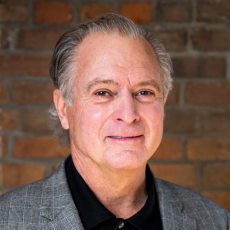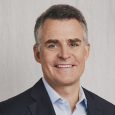How would you describe Seabridge to a reader that is not acquainted with the company?
Seabridge was founded in 1999 with the aim of offering the industry’s best leveraged opportunity for rising gold prices. Over the last 24 years, not only have we succeeded in this mission, but we've also discovered significant amounts of copper. Our largest venture, the KSM project in northern British Columbia, is the world's largest undeveloped project as measured by ounces of gold, and is now also a significant player in the copper world.
When did you realize the KSM project was so big and what was your initial reaction to discovering it?
We acquired the KSM project in 2000, where initial resources were estimated at about 3.4 million ounces of gold and 2.7 billion pounds of copper. However, since our initial exploration program in 2006, it has grown beyond our wildest expectations. We're now looking at 47 million ounces of gold and about 7 billion pounds of copper in reserves with significantly more gold and copper in other resource categories. The project's massive scale was surprising, but it reaffirms the importance of our commitment to long-term resource discovery while at the same time, minimizing share dilution.
Given the current situation with copper and gold, do you think KSM can potentially impact the North American supply chain for these metals?
Yes, the global demand for copper is on the rise due to its role in the green transition, and KSM has the potential to significantly contribute to copper supply. The increasing importance of copper is further emphasized by projections that demand could double to 50 million tons annually as early as 2035. KSM could be a significant contributor, potentially offering a more secure and independent copper supply for North America.
How do you assess the current global interest in gold?
It’s growing. Central banks globally are selling dollar-based assets and adding gold to their reserves in record amounts after decades of divesting the metal. Gold has historically performed well in both inflationary environments and recessions. The current dialogue around gold is significant because it reflects concerns about inflation, a potential recession and rising government deficit spending. As sovereign debts continue to grow relative to GDP, gold's value to investors is also likely to increase, positioning it as a vital asset for wealth preservation.
What's next for KSM, and how do you plan to develop such a large resource?
To develop KSM, we're actively seeking a joint venture with one of the world's largest mining companies. Our focus has been on de-risking the asset through updated technical reports and ensuring that our existing permits, set to expire in 2026, are extended. We have secured $375 million in funding for early site construction, which includes road-building, fish habitat construction, camp installations and power infrastructure, all aimed at achieving a designation to keep the permits valid for the life of the project.
How do you view the current policy frameworks around mining permits in North America?
Canada has a well-defined permitting process that emphasizes the need for local indigenous support. However, having technical expertise within the regulatory bodies could further expedite this process. There are initiatives, like Canada's Critical Minerals and Infrastructure Fund, aimed at facilitating project development, and we are exploring how KSM might benefit from such programs.
How would you respond to critics who say that gold doesn't contribute as much to society as other metals, such as critical metals?
A hundred years ago, gold backed bills of exchange were required to complete international trade transactions. Over time, this role was taken over by the US dollar but now that the dollar has become weaponized and used to implement US sanctions, some of the largest countries are starting to use gold once again to achieve greater security and independence. Gold has played a significant role in trade for over 6,000 years, and we think this role is coming back because gold is universally accepted as final settlement and it has no central bank or government issuer to manipulate its use or value.
In the investment world, gold serves as a hedge against inflation and economic instability. While it's true that the industry has struggled in the past with capital allocation and equity dilution, at Seabridge, our guiding principle is to offset these issues by increasing gold reserves and resources per share, thereby enhancing shareholder value. Additionally, it’s worth noting that the gold industry is evolving; where large companies are now also focusing on mining copper. This strategic shift towards copper, which is a critical metal, indicates the industry's adaptability and its ability to deliver more than just gold.
Is it common for gold to appear with other metals, and can you elaborate on how your project at KSM is unique in this regard?
In porphyry systems, you almost always find gold along with copper. At KSM, we have five deposits with both metals but in varying ratios. This provides us the flexibility to focus on either gold-dominant or copper-dominant mine plans based on market conditions and the requirement of our eventual partner. Our most recent comprehensive technical study has mapped out a 72-year mine plan, capturing about 40% of the resources in the ground. This long-term sustainability is a unique aspect of KSM, appealing not only to investors but also beneficial for local communities who seek long-lasting economic impacts.
Can you discuss the economic benefits your KSM project will bring to local communities and how it aligns with the interests of indigenous groups?
Currently, during the early site construction phase, we already employ around 400 people during peak season activities, most of whom are from indigenous communities. By the end of this year, we'll have invested 400 million Canadian dollars in construction activities over the past two years. Eighty percent of this investment is directed towards First Nation companies or those having joint ventures with them. Our Impact Benefit Agreements with the Tahltan and Nisga’a Nations provide these communities not just jobs but also an eventual financial interest in the project, creating multi-generational economic benefits. We believe that this long-term benefit, along with our safe project designs, are key to gaining and sustaining support from First Nations communities.
Do you think there's a gap between public perception and the actual contributions of the mining industry?
There is definitely a disconnect. While society is increasingly supportive of green energy, many people overlook that these initiatives require significant amounts of metals that must be mined. The mining industry has to improve its communication and educate the public that without new mining projects, a green energy future is unattainable. Moreover, in the U.S., numerous copper projects have been turned down by the regulators, despite copper being declared a critical metal. For the transition to clean energy to happen, new mining projects need to be developed provided they can demonstrate stringent environmental safety measures.
What personally motivates you to put so much effort and commitment into developing the KSM project?
What truly fuels my commitment is the love for the industry and the dream of seeing a mine at KSM. Our team is a stellar group of geologists, engineers and environmental experts who share this vision. As you work up the corporate ladder in bigger companies, you are generally disconnected from the projects themselves and deal mostly with people issues. At Seabridge, our senior team is directly involved with KSM, which keeps them motivated and focused. When KSM eventually opens, it's projected to be one of the largest gold and copper mines ever built, with a lifespan that could benefit several generations to come.





